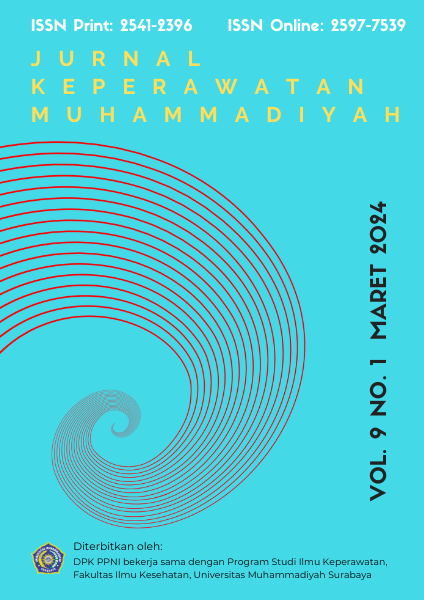Kajian Pemberian ASI Eksklusif Dan Pengaturan Pola Makan Terhadap Kejadian Stunting Pada Anak Umur 24 – 59 Bulan Bulan Di Wilayah Kerja Puskesmas Muncak Kabau
Keywords:
Exclusive breastfeeding, Diet, education, children 24-59 monthsAbstract
Background: The incidence of stunting among children aged 24-59 months in the Muncak Kabau Community Health Center working area occurs due to a lack of knowledge among mothers and the community about the benefits of exclusive breastfeeding and providing a good diet for toddlers and their children.Purpose of writing: To find out the knowledge of mothers and the community about exclusive breastfeeding and dietary regulation for children aged 24-59 months (2-5 years).Research Method: The independent and dependent variables of the sample are mothers who have children aged 2-5 years and the educational history of mothers who are at the UPTD Puskesmas Muncak Kabau, Buay Pemua Bangsa Raja District. East Ogan Komering Ulu Regency.Research Results: From the results of research, education is also consistent according to researchers, where low education (SD, SLTP) has less knowledge and insight, so they do not understand what stunting is in toddlers, so many toddlers are stunted, on the contrary, secondary education (Senior High School) and higher education (Academy , Higher Education) have better knowledge and insight, so that they understand what stunting symptoms and consequences are, so that their children under five are not stunted.
Conclusions : There is a significant relationship between exclusive breastfeeding, diet, maternal education, maternal age, maternal occupation and stunting in toddlers.
References
KemenKes (2018). Buletin Stunting. Kementrian Kesehatan Republik Indonesia.
WHO. 2010. Nutrition Landscape Information System (NLIS) : Country Profile Indicators
Interpretation Guide. World Health Organization.
http://www.who.int/nutrition/nlis_interpretationguide_isbn9789241599955/en/. - Diakses
Juni 2020
United Nations Children’s Fund (UNICEF). The State of the World’s Children: Children Food and Nutrition. Newyork: 2019
DepKes (2018). Riset Kesehatan Dasar (RisKesDas). Departemen Kesehatan Republik Indonesia. http://www.depkes.go.id/resources/download/info-terkini/hasil-riskesdas2018.pdf - Diakses Juni 2020 5.
DinKes (2017) . Pantauan Status Gizi (PSG) Tahun 2017. Dinas Kesehatan Provinsi Sumatera Barat. http://dinkes.sumbarprov.go.id/images/2018/07/file/LAKIP_DINKES_SUMB AR_TAHuN_2017.pdf- Diakses Juni 2020
Tim Nasional Percepatan Penanggulangan Kemiskinan (TNP2K). 100 Kabupaten / Kota Prioritas untuk Intervensi Anak Kerdil. Jakarta Pusat : 2017
Dinas Kesehatan Kota Padang. Prevalensi Stunting Kota Padang. Padang:2019.
WHO (2013). Stunting in Nutshell. World Health Organization. https://www.who.int/nutrition/healthygrowthproj_stunted_videos/en/ - Diakses Juni 2020.
Danaei G, Andrews KG, Sudfeld CR , Fink G , McCoy DC, Peet E, et al. Risk Factors for
Childhood Stunting in 137 Developing Countries : A Comparative Risk Assessment Analitysis at Global, Regional, and Country Levels. PLoS Med. 2016 Nov 1;13(11): 8-9.
Imelda, Rahman.N, Nur.R. Faktor Resiko Kejadian Stunting pada Anak Umur 2-5 Tahun di Puskesmas Biromaru. Jurnal Gizi dan Kesehatan. 2018 Juli 2;1 : 40-2.
Downloads
Published
Issue
Section
License
Copyright (c) 2024 Jusmawati, Ayu Mislena

This work is licensed under a Creative Commons Attribution-ShareAlike 4.0 International License.
- Penulis tetap memegang hak atas karyanya dan memberikan hak publikasi pertama kepada jurnal ini yang secara simultan karya tersebut dilisensikan di bawah:Â Creative Commons Attribution-ShareAlike 4.0 International (CC BY-SA 4.0)













